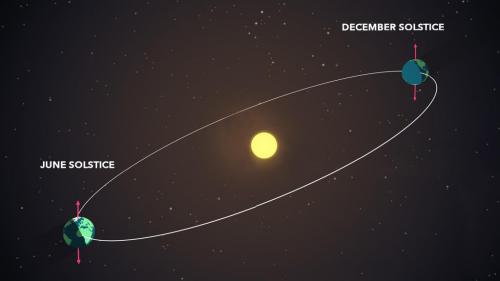Celebration of Space - December 15, 2023
Due to the proximity of the winter holiday, the Frosty Drew Observatory and Science Center will remain closed on Friday, December 22, 2023, and will open next on Friday, December 29, 2023 for our final Friday Stargazing Nights event for 2023. Be sure to mark your calendars as you do not want to trek all the way out to Ninigret Park to find us closed.
On Thursday, December 21, 2023, at 10:28 pm EST, Earth will reach the point in our orbit where the Northern Hemisphere is at maximum tilt, 23.4º away from the Sun. This is called the Winter Solstice, and hails all the holiday festivities of the season. The Winter Solstice is also the first day of the winter season in the Northern Hemisphere, as well as the shortest daytime period of the year for residents of the Northern Hemisphere. Consequently, the longest nighttime period will occur on this date which will allow for us to celebrate fabulous views of the night sky. Locations north of the Arctic Circle will have 24 hours of night with corresponding locations south of the Antarctic Circle experiencing 24 hours of daylight. In the Southern Hemisphere the Sun will cross the zenith (directly overhead) for residents along the Tropic of Capricorn, resulting in the Sun crossing the sky 23.4° below Earth’s equator. On a cultural note, the Winter Solstice brings all the revelries we enjoy during this time of the year. It’s a harbinger of the cold long dark ahead as we descend into the winter, but it’s also the point that the days start to get longer as we begin our shift towards the Vernal Equinox. So take a moment on Thursday, at noon, to step outside and notice how low the Sun is in the sky, and welcome the reason for the season as we descend into holiday bliss abyss and close out an unprecedented year of clouds.
On Thursday, December 14, 2023 at 12:07 pm EST, the largest solar flare of the current solar cycle (Cycle 25) occurred. It was a massive X2.8 class flare, and it happened on the western side of the Sun that is facing Earth. Even though the flare was not fully directed at Earth, a glancing blow is headed our way, and should arrive around December 17th. Considering that there have been three M-class flares over the past 24 hours, and depending on how intense the geomagnetic storm will be, we could have a chance at spotting the Northern Lights. Now don’t get all crazy thinking that we’ll see blazing views of the Lights in Southern New England, which is what the media likes to put out - images of the Northern Lights from the Arctic, that’s just not happening. But it may be possible to see some very subtle shades of grey and possibly red. The further north you are viewing, you may be able to catch subtle greens near the northern horizon. In any case, seeing the Northern Lights with your naked eye in Southern New England is quite difficult, and most viewers use a camera to catch the view. If we notice that indicators are on the rise for increased viewing potential from our region, we’ll post a heads up to our Instagram. In the meantime, check out this video of the flares, compliments of NASA’s Solar Dynamics Observatory.
Have a Happy Winter Solstice from all the astro-geeks at Frosty Drew Observatory and Science Center!
- Author:
- Scott MacNeill
- Entry Date:
- Dec 15, 2023
- Published Under:
- Scott MacNeill's Columns



